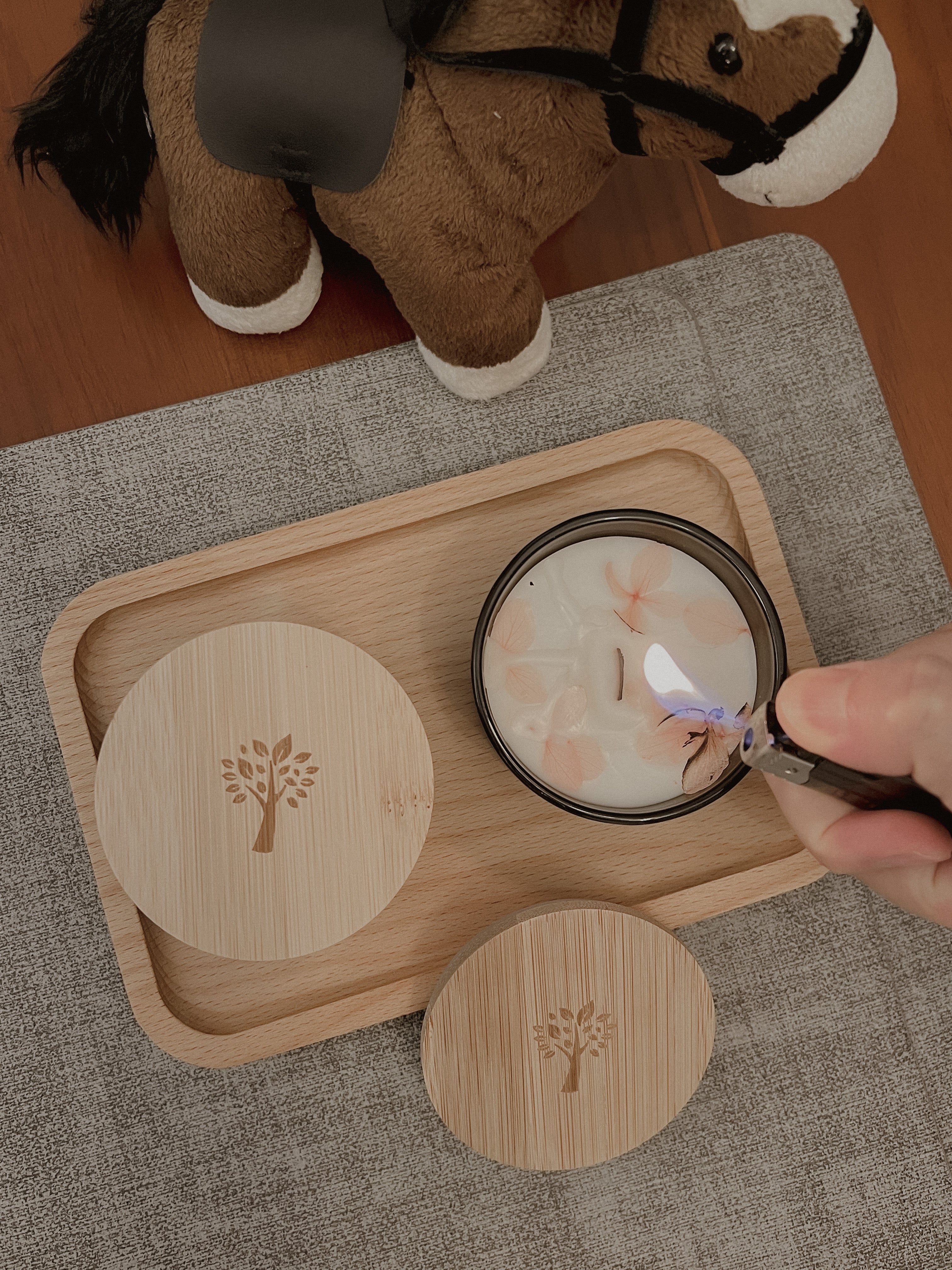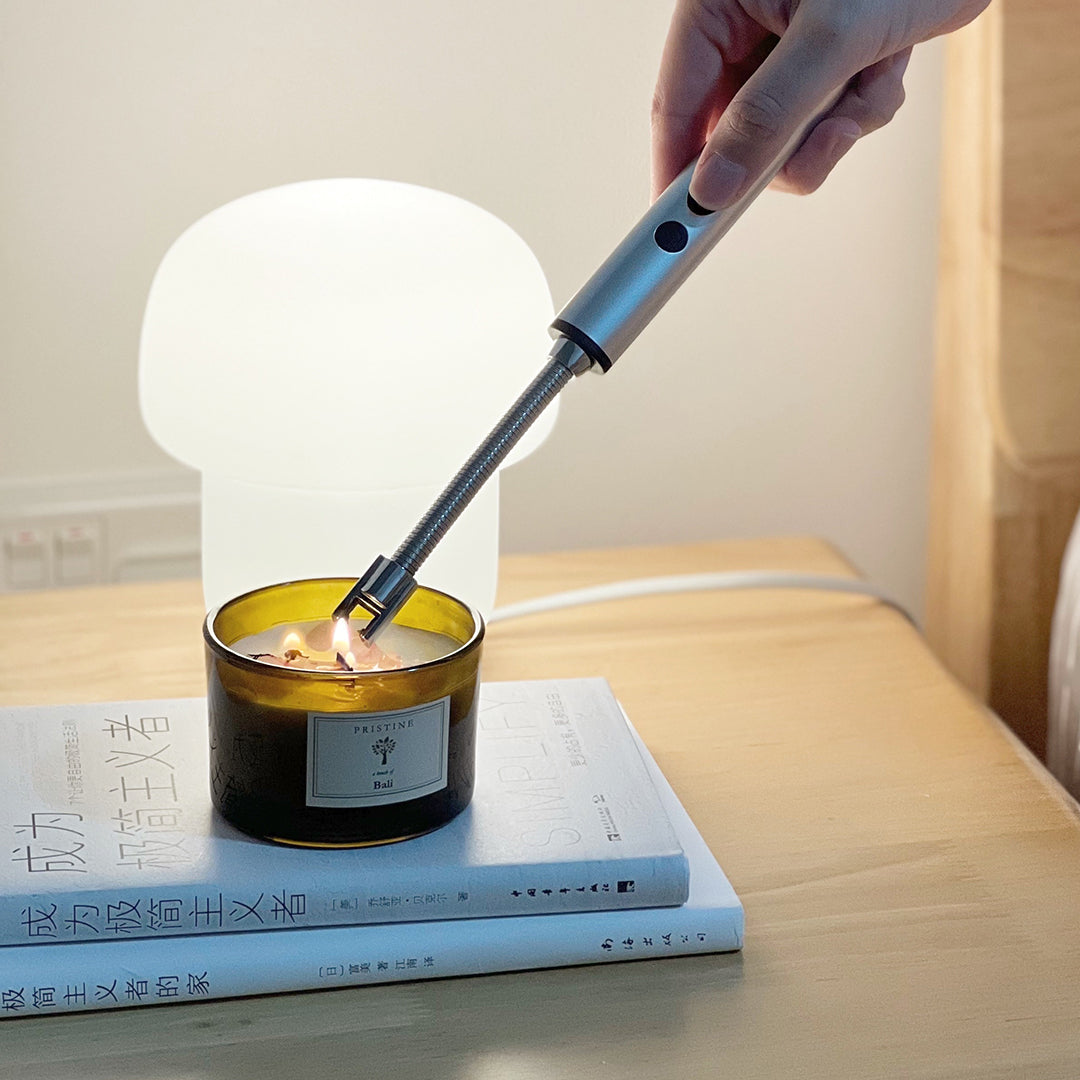If you are new to the world of wood-wick candles, we should let you know that our wicks are made from mahogany. They provide a nice crackling burn similar to the feel of a warm cosy fireplace. You may never want to go back to cotton wicks ever again!
Learn more about our wood-wick candle collection here.
Wood wicks have unique burning properties. Different from cotton wicks, but also very simple:
When lighting a wood wick candle, the best way is to hold the candle up and tilt it at an angle. Use a lighter instead of a matchstick. Let the flame draw across the length of the wick, which should take less than 3 seconds.

You might need to try a few times to get it right. The flame needs to be in contact with the wax via the wick before it will really start burning smoothly. If the flame goes out, give it another try - once you have done it once successfully, it should light up easier the next few times..
Here are some common questions that we get:
1) I am not able to keep my wood wick candle lit, how do I keep the candle burning?
Do note that the fuel for the flame comes from the candle’s wax. Ensure that the wood wick is close enough to the wax surface, otherwise if the wick is too long and far from the wax, the wick will be extinguished. If the wick is too long and you are burning a fresh candle for the first time, simply use a clipper to trim the wick. Otherwise, if this is a subsequent burn, simply break off the charred wick with your fingers. This should ensure closeness of the wick to the wax for continuous burning.

2) How to make a candle burn evenly?
The first burn is always the most important, to prevent tunneling be sure to keep the candle burning till the top surface of the wax is completely melted and forms a wax pool to the edge of the candle jar. If the candle burns for too short a duration, a partial wax pool will cause the candle to tunnel.

